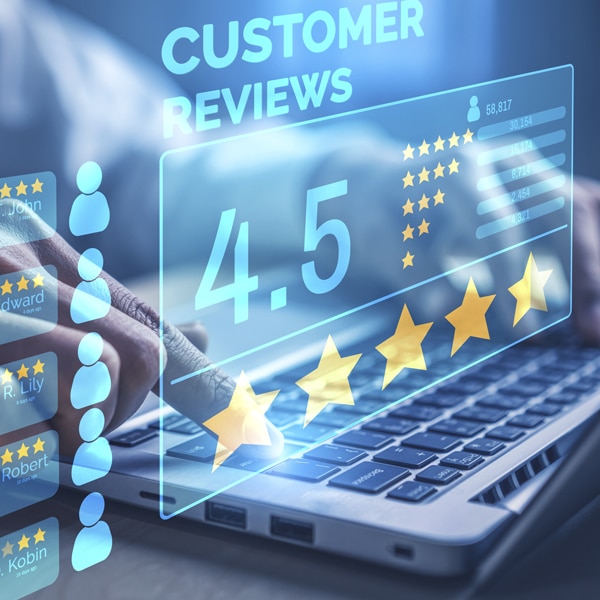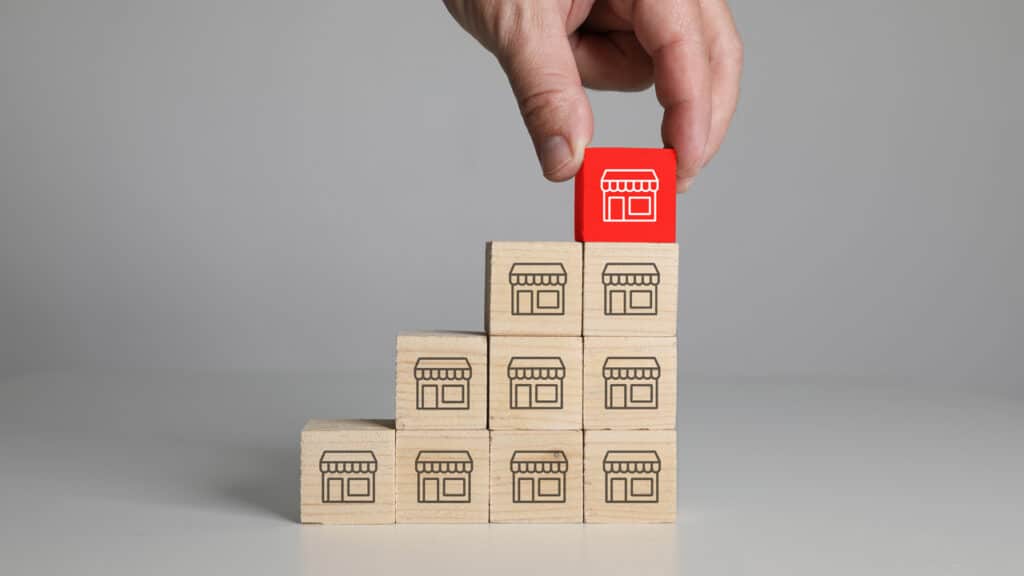The value of creating a new business model for owner and investor value creation.
Boast specializes in R&D tax credit automation and has experts that can advise on common forms of funding and funding sources for innovative businesses to help your business model succeed.
Businesses grow in many ways, but underpinning the success or failure is much more than just products or services, it’s the approach to markets, which is also a business model. This article will explore types of business models, how to improve or innovate on business models, and other ideas to help you select the right business model.
Innovative companies look at business objectives and the innovation process to determine how to help customers be happier and purchase more. An innovative business model looks at process innovation, product innovation, emerging markets, and any other kind of fundamental change that could help a company create a new revenue stream.
BCG shares the following regarding innovative business models (https://www.bcg.com/en-us/capabilities/innovation-strategy-delivery/business-model-innovation)
Product and service innovation is essential, but business model innovation can deliver a more lasting competitive advantage, particularly in disruptive times.
In the past 50 years, the average business model lifespan has fallen from about 15 years to less than five. As a result, business model innovation is now an essential capability for organizations seeking to drive breakout growth, reinvigorate a lagging core, or defend against industry disruption or decline.”
What Is Business Model Innovation?
Business model innovation is the art of enhancing advantage and value creation by making simultaneous—and mutually supportive—changes both to an organization’s value proposition to customers and to its underlying operating model.
At the value proposition level, these changes can address the choice of the target segment, product or service offering, and revenue model. At the operating model level, the focus is on how to drive profitability, competitive advantage, and value creation through these decisions on how to deliver the value proposition:
- Where to play along the value chain
- What cost model is needed to ensure attractive returns
- What organizational structure and capabilities are essential to success
Business model innovation is also critical to business transformation. Many organizations share a common set of concerns:
- What type of business model innovation will help us achieve breakout performance? How do we avoid jeopardizing the core business?
- How do we build the capability to develop, rapidly test, and scale new models?
- Inspiring an organization to change is not a trivial undertaking, but given the current strategic environment, it’s a critical one.
Types of business models
1. Subscription service model
This is rapidly growing in popularity because it can become so predictable for managing future growth. A decade ago, these types of business models were primarily used in software (SalesForce or some Google applications), media providers (Netflix), or other traditional ‘direct marketing’ companies like specialty food or magazine offerings.
Today, however, it is a dominant model that is highly preferred by many business leaders, investors, and Wall Street. Why? Because subscriptions are a solid model that offers dependability and forecast-ability.
2. Freemium model
There are several companies that made this model highly known, Google is one of them. Consumers can get free items perpetually, like Gmail, or upgrade to higher levels of business software, games, and other offerings.
Freemium, is a collation of the words “free” and “premium.” It’s a pricing strategy by which a basic product or service is provided free of charge, but money is charged for additional features, services, or virtual or physical goods that expand the functionality of the free version of the software.
According to HubSpot (https://blog.hubspot.com/service/freemium):
To successfully implement a freemium acquisition model, you have to place limitations on certain aspects of your product. You can do this in several ways:
- Feature limitations: Offering extra features, enhanced functionality of available features or ad hoc paid upgrades (e.g. rare items in a game)
- Usage quotas: Storage limits, monthly credits, data processing quotas
- Limited support: Tiered access to customer service and support resources
By limiting access or usage in your product, you create friction for free users, which encourages them to upgrade to your premium tier.
Usually, businesses will use several of these limitations together to amplify this effect, even more, so feel free to get creative. The most important thing is that the limitations will leave them wanting more, but not so much that they don’t still see the core value of your product. You have to find the right balance, which requires a deep understanding of your customer’s needs and the value they get from your product.
3. Direct sales
Direct sales is not a new business model. In fact, it’s one example of the oldest approaches, and a highly viable business model. If you truly understand your existing customer segment, you know how to arrange for others to help you sell directly to them.
Investopedia writes (https://www.investopedia.com/ask/answers/042715/what-are-some-examples-different-types-business-models-major-industries.asp):
Under a direct sales business model, sales of products or services generate revenue through a network of salespeople, who sell directly to customers. Typically, no fixed retail location exists under a direct sales business model. Instead, individual salespeople are connected with a large parent company and given the tools to become individual entrepreneurs.
Direct sales take place through presentations or demonstrations of the product or service in a one-on-one setting or during a hosted party at a prospect’s home or business. Business owners in direct sales earn a portion of their sales, while the company providing the product retains the remaining revenue. Companies such as Avon, Arbonne, and Herbalife are examples of the direct sales business model.
4. Franchising

Franchise owners earn a portion of the revenue generated by their locations, and the franchisor collects licensing fees in addition to a percentage of sales revenue from the franchisee. Popular companies that depend on the franchise business model for growth include McDonald’s and Subway.
Under a franchise business model, business owners purchase another organization’s business strategy. Instead of creating a new product and the distribution chain to deliver that product to consumers, the franchisee purchases an ownership stake in a business model that has already been successfully developed.
The company offering its proprietary product or service, its business processes, and its brand is known as the franchisor, and it benefits from a reduction in capital output used to build new locations.
5. Advertising-based
The advertising business model has become popular in the web era, where companies like Google and Facebook have been able to build the largest digital advertising machines on earth.
The advertising business model is a revenue generation strategy supported by the sale of advertising. In general, a business must first establish an audience by generating content or facilitating interaction and then earn revenue by selling access to that audience.
6. Brick-and-mortar stores

The term “brick-and-mortar” refers to a traditional street-side business that offers products and services to its customers face-to-face in an office or store that the business owns or rents. The local grocery store and the corner bank are examples of brick-and-mortar companies.
Retailers make money by providing their service at reasonable gross margins. These gross margins then pay for the retail overheads and deliver a final net profit to the retail or e-commerce business owners.
The median salary for a restaurant owner/operator is around $60,000 USD. Retail store owners earn a median income of $51,270 per year.
Commerce approaches
BlueCart writes. “If the idea of B2B and B2C business models seems confusing, here is a simple example to help.
Let’s say you are a farmer who grows watermelons. You’ve harvested this year’s crop and have 1,000 watermelons to sell. You need to decide if you’ll choose to go the B2B or B2C route.
If you choose the B2B route, you need to find a retailer to buy your watermelons wholesale (see what is wholesale). This could be a grocery store, restaurant, or another farmer who needs additional watermelons. You will sell in bulk for a discounted price to another party who will then sell those watermelons in some form to consumers.
If you choose the go B2C, you would instead set up a farm stand. At this farm stand, you sell watermelons directly to customers as a DTC food business. This requires you to spend more of your time selling the watermelons, but you can sell them at a higher price.” https://www.bluecart.com/blog/b2b-vs-b2c
B2C – Business to consumer
B2C businesses sell directly to their end-user

B2C e-commerce has experienced a surge in popularity, accounting for 56.9% of retail gains from 2018 to 2019, with contributions from large companies such as Amazon. While some B2C businesses use their platforms to market and sell their own products, others make money by connecting buyers to sellers, using content traffic to sell advertisement spaces or restricting content to paid subscriptions.
Among e-commerce giants like Amazon and eBay, other recognizable B2C companies include The New York Times, Facebook, Netflix and Uber.
How does B2C work?
B2C businesses sell goods and services directly to their consumers. A consumer can be defined as an end user who purchases a product or service for personal use. Though many businesses sell their own products, this is not a requirement for the B2C model since many companies also sell products purchased from other businesses.
A B2C retail experience can be shopping at a local grocery store or purchasing new headphones from an online store. A B2C service experience can be a visit to the doctor, visiting a hair or nail salon, dining out at a restaurant or using the Uber app to purchase transportation.
Types of B2C companies
Though the term “B2C” is most frequently used to refer to retailers and marketplaces, it can also be applied to content and service providers.
B2C businesses can vary significantly. Some businesses may choose to adopt a combination of profit models — as many business models incorporate advertising and fee-based approaches together.
Common types of B2C companies include:
- Direct sellers. The most common and familiar e-commerce business, where customers purchase directly from the seller.Examples: Zappos, Gap.com and Target.com
- Intermediaries. Rather than offering their own products or services to shoppers on their site, these e-commerce companies offer a platform for C2C (consumer-to-consumer) markets, connecting buyers with independent sellers.Intermediary companies often profit by charging a small percentage of each sale from vendors.Examples: Etsy, Poshmark, eBay and Expedia
- Advertising-based. These e-commerce companies use traffic-driving strategies like Content marketing to connect shoppers with relevant advertisements for products and services. In this scenario, the website profits from selling advertising space.Example: HuffPost
- Community-based. Similar to advertising-based businesses, community-based companies use online communities centered around specific identities or interests and information such as demographic data and geographic location to connect website-goers with targeted ads.Example: Facebook and online forums
- Fee-based. These e-commerce businesses require a paid subscription in exchange for unrestricted access to their content.Example: The Wall Street Journal, The New Yorker and Netflix
- Brick-and-mortar. A physical location of a business or retail establishment where consumers can enter the store, touch and hold the merchandise and buy products or services in-person.Example: Restaurants, doctors’ offices, J.Crew storefronts, car rental branches and salons
B2C business-to-consumer e-commerce, also called retail e-commerce, is a business model that involves sales between online businesses and consumers. B2C e-commerce is one of four major e-commerce business models, the other three being B2B (business-to-business), C2B (consumer-to-business), and C2C (consumer-to-consumer). https://www.techtarget.com/searchcustomerexperience/definition/B2C
B2B – Business to business
In a B2B business model, a business sells its product or service to another business
A business model based on selling from one business to another business is called B2B. Of course, it’s really ‘people’ at a business selling to ‘people’ at another business, but its a similar model to any other; prove customer value and the building blocks of your business plan will start paying off.
B2B is often offered through digital platforms and online services. Businesses require strong communication channels and will often pay through a subscription fee. Paying customers can happily provide success stories and share what works best for customer acquisition strategies. These broader perspective, valuable lessons are opportunities to improve the value proposition offered to businesses.
Businesses may be less willing to adopt new technologies, unless they see more value and less risk. Otherwise they may stay with existing products that they perceive as higher quality, and avoid any drastic changes.
Who is your customer? In B2B it is the buyer who has a role or a job where they need the services of another company. This could be technology in a market or industry where they focus for a long period of their career, or just for a short period.
This customer and this model can cause some businesses to go back to the drawing board to understand the customer need. It’s not just about making money. An organization creates a bond with a buyer, just like any B2C relationship. The old saying in B2B is, ‘people buy from people.’ Boast is a B2B company.
C2B – Consumer to business
This is a new business model development where not many business model innovations have prevailed from past existing business models.
C2B business solutions are often used to drive business to a company’s e-commerce platforms. Some examples of C2B marketing include reverse auctioning, affiliate marketing, and on-commission advertisement space.
There are a few companies whose trading system mirrors C2B. Online marketing websites such as Google Adsense, Commission Junction, and Amazon are examples of C2B models. People can display contextual ads, promotional banners, or any other advertising on their websites.
C2C – Consumer to consumer
Another of the new business models that is growing is C2C. This business model canvas is based on model innovation where a revenue stream of the ‘company’ is one of the building blocks of innovation that needs new technology to succeed.
C2C business examples include Amazon, Alibaba, and the online sites of brick-and-mortar stores such as Target and Walmart. C2C – Consumer-to-Consumer.
Consumers sell to other consumers with the aid of an online intermediary who takes a cut. C2C eCommerce examples include eBay, Amazon Marketplace, and Mercari.
A successful business model answers these six important questions:
#1 Who is your target audience?

Your company can never forget about the innovation needed to put the customers first. Understanding your target buyer, their needs, wants, willingness to pay money in trade for your service or product, is at the heart of every successful business model innovation.
People forget businesses that don’t understand them. But they don’t forget the business that ‘gets’ them.
#2 What are you planning to offer them?
Any of your new business models must consider the economics of delivering exactly what you plan to offer for sale. Your business model innovations should include considerations for customer focus, wants, needs, industry innovation, and other factors customers want.
The demand you create must also be fulfilled on the supply side.
#3 How are you going to market your offerings?
Depending on your industry and your customers, your company can offer value to the market or customer in many different ways. Using the latest technology or media is one option, but good marketing plans and strategies require a lot of testing to validate.
The easiest way is to work with professionals who are already addressing your industry. Hiring their organization or service could be the easiest way to shortcut your learning about how to market your offering. This is also highly dependent on your business model selection.
Your business model could include an appeal to consumers as one of the most innovative companies if that is what your audience wants, or, if more traditional—like the car industry—you could stick with basic ads and hands on experience with a product.
#4 What are the costs involved?
Your company should have a plan that involves a few key, upfront phases.
The first phase addresses the customers requested value by testing what they want and how much they will pay for this value. This is Phase 1.
Phase 2 is validating and scaling the business model. This can involve technology that helps your company scale its innovation across many fronts. Scaling the business means taking the offering delivery from a few to many. This may require investment in time, machines, effort, software, but it will return higher margins and faster production.
#5 What is your pricing strategy?

Many business model strategies focus on value that brings in cash upfront, but often customer wants to really experience value from a product or service before they are willing to pay. This is expressed in several business model types like the ‘freemium’ model.
Business model innovation involves exploring what fees can be charged, like a subscription or upfront payment, or if other arrangements may be better for a customer to to realize value from the company.
#6 What are your revenue streams?
Closely aligned to your pricing business model innovation is your revenue model innovation. Revenue is what your company collects from the customer and reflects the type of model you have adopted.
Customers may be part of a subscription model where the company charges the customer based on a value proposition that supports yearly delivery of goods or materials, or in other cases it may be daily delivery of offerings, like with software.
Business model innovation conclusion
Your company will succeed best if it has customers and value in mind. Innovative approaches help to differentiate what you want to offer from what is already being offered in the marketplace today. According to Forrester, innovative businesses grow 260 percent faster than average companies.
This shows that business model innovation that helps the customer get value is the best angle to adopt when creating the best model innovation. The customer or customers have the best idea of what they will pay for if you ask them, collect feedback or survey them.
How quickly you can adopt your business model innovation will directly correlate to your positive chances for building a long-term and successful business.
Did this answer your questions about business model innovation, innovation in delivery, innovation of pricing, innovation of products and services? We hope so, and we hope your business model innovation is successful. If you have other questions about innovation, please read our other content, papers, guides, or watch our innovation videos starting at Boast.ai









